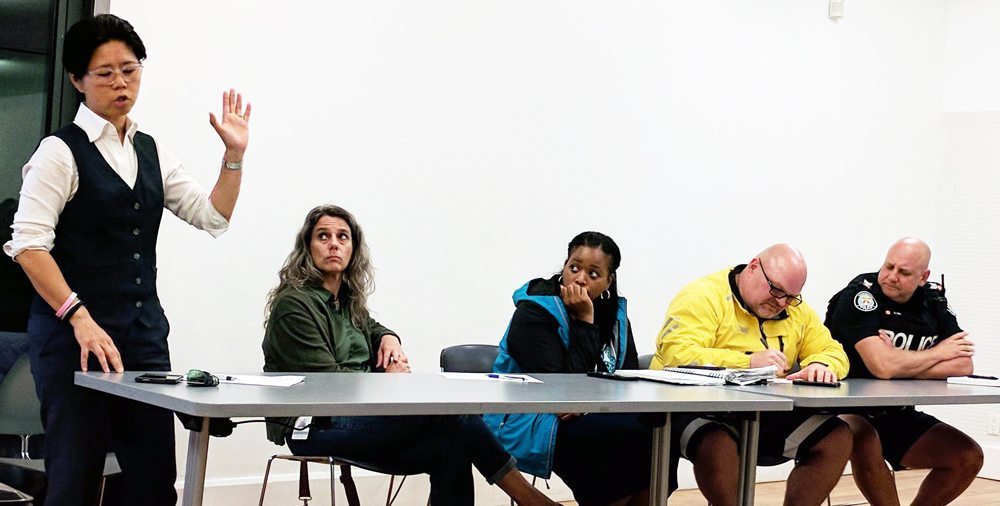
In January, Church-Wellesley Village residents held a safety meeting to gather feedback and discuss concerns about increasing crime in the area.
Since that first meeting, the community has held four safety walks (April 24, May 4, 11, and 16) and a lighting audit (June 5) to assess problem areas and develop prevention strategies.
The latest Church-Wellesley Village safety meeting was held on June 15 at the 519 on Church St.
Councillor Kristyn Wong-Tam attended the meeting. She has been proactively involved in the community-led response which aims to help improve the safety of Village residents and businesses.
An increase in theft was also on the agenda: local business owners are having to lock up items such as spray paint and bike tools. On top of this, there isn’t enough on-street policing to monitor (or stop) the increasing criminal activity.
One of the solutions—as proposed by Streets to Homes—is working to educate businesses on how to reduce the impact of “street” issues. The city-funded program provides a few hours of training to business owners and staff to obtain the skills they could need to know what to do the next time an incident may occur, whether it’s reporting the incident or working to de-escalate it.
The Bystander Intervention Campaign is aiming to increase the number of people that report incidents. They hope to create a digital tool for community members to make it easy and simple to report a problem. The program has yet to receive funding and is in the early days of development.
Toronto Public Health has suggested that putting out “sharps receptacles” in local parks would mitigate the problem of drug paraphernalia in public spaces. They are also running an educational needles awareness program for children to help protect and educate children about drugs.
“Most adults when the walk through the park and see a needle know not to pick it up,” says Wong-Tam, “but kids may not.”
Reporting crime is key to improving safety, the meeting heard. But the lack of funding resulting from insufficient reporting creates a funding gap: the city funds but doesn’t deliver all services. Service providers in the neighbourhood need city funds but need data to support their funding requests. The city assesses the need before funds are granted but if reporting is inaccurate (and presents figures that do not reflect the community’s actual problem) then the city’s funding decision is based on bad information. Residents and business owners must file reports as often and as accurately as possible to ensure that the data is complete and the funds are granted.
City council and the community have come up with proposals to solve the Village’s safety issues but what’s lacking—for now—is funding. The problems the community is facing are clearly defined (and are similar to the problems neighbourhood face throughout the GTA) but the solutions cannot be deployed without resources. Funding needs to be sufficient: it also needs to be better divided among service providers for maximum impact and any remaining service gaps need to be eliminated.
 TheBulletin.ca Journal of Downtown Toronto
TheBulletin.ca Journal of Downtown Toronto

